There’s nowhere else in Spain – or, indeed, Europe – quite like Andalusia. This intriguing province has a rich cross-cultural history that has given it a unique character and lots of charm. Ruled over for centuries by Moorish caliphs and emirs, it wasn’t until 1492 that the region was once more fully incorporated into a Christian realm, and the Kingdom of Spain as we know it today was created.
Granada was the last Islamic city to fall to the Catholic queens and kings who steadily reconquered the Iberian Peninsula. You might call it the jewel in the crown of southern Spain, built into a spectacular habitation by the Emirate of Granada. Its supreme glory is, of course, the Alhambra, a large complex of intricately decorated palaces, tranquil ornamental gardens, and stalwart stone fortifications. The buildings were thought so incredibly luxurious and comfortable by Queen Isabella of Castile that she temporarily made it her principal residence. In fact, it was from here that she approved Columbus’ first voyage to the New World.
While the Alhambra might be Granada’s most popular and famous tourist draw, the city also contains a stunning array of edifices devoted to Christian worship, as well as several pretty neighborhoods that need no other attraction than their cute houses and vivacious streets. In fact, Granada as a whole gives off a very livable vibe, with little crime to speak of and plenty of charm. Sure, it’s not a gastronomic capital, but you’re never far from cured ham, refreshing chilled soup, or grilled seafood.
While we’re principally going to focus here on things you should see inside Granada proper, don’t forget that the city isn’t far from either the mountains or the seaside. In fact, it’s really just as easy to go for excellent day-long hikes in the Sierra Nevada as it is to drive down to the beach for an afternoon of sun and sand.
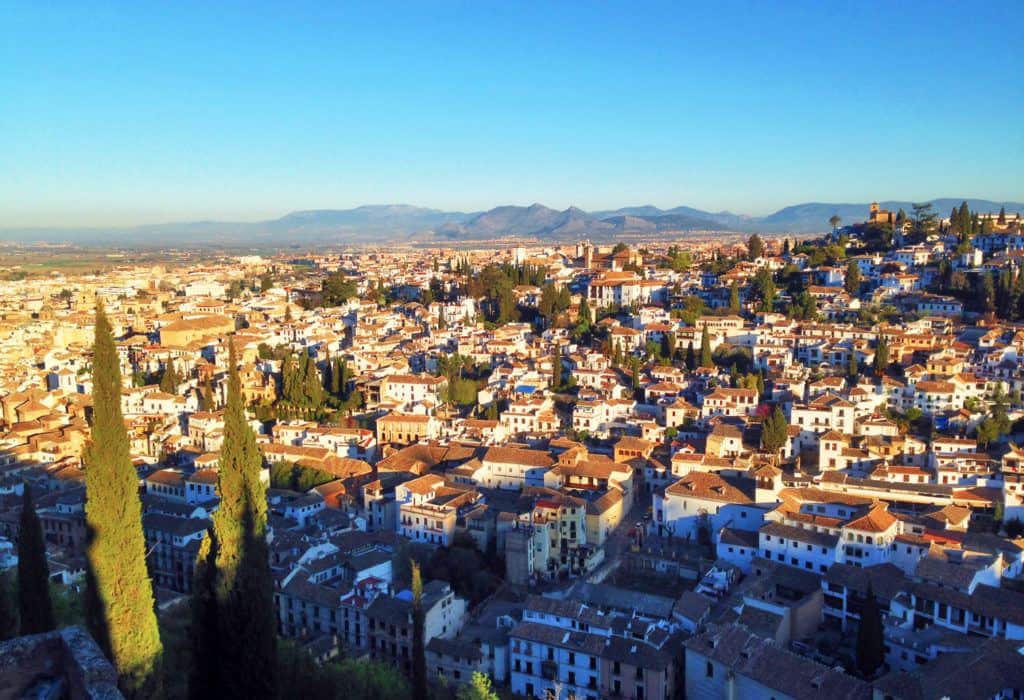
How Many Days to Spend in Granada
We could happily while away a whole season in Granada. However, if you want to get your first feel for the city, three days is an ideal amount of time to explore some of the major areas, while leaving lots of opportunities for eating, drinking, and, if you fancy it, the afternoon siesta!
Each of your days can be spent exploring a different part of the city’s character. The Alhambra alone has enough to see to warrant a full day, from the Nasrid palaces to the Generalife gardens.
Another day of your Granada itinerary should be devoted to exploring the downtown part of the city. Watched over by the forbidding cathedral, it’s here that you’ll find the buzzing heart of Granada, filled with markets and plazas.
You’ll also want to spend a day wandering the trendy heights of the Albaicin district and neighboring Sacromonte, the former gypsy quarter. If you have time, you could even venture out of town for half a day for a hike through the Sierra Neva mountain range, which is home to the highest peak in all of continental Spain.
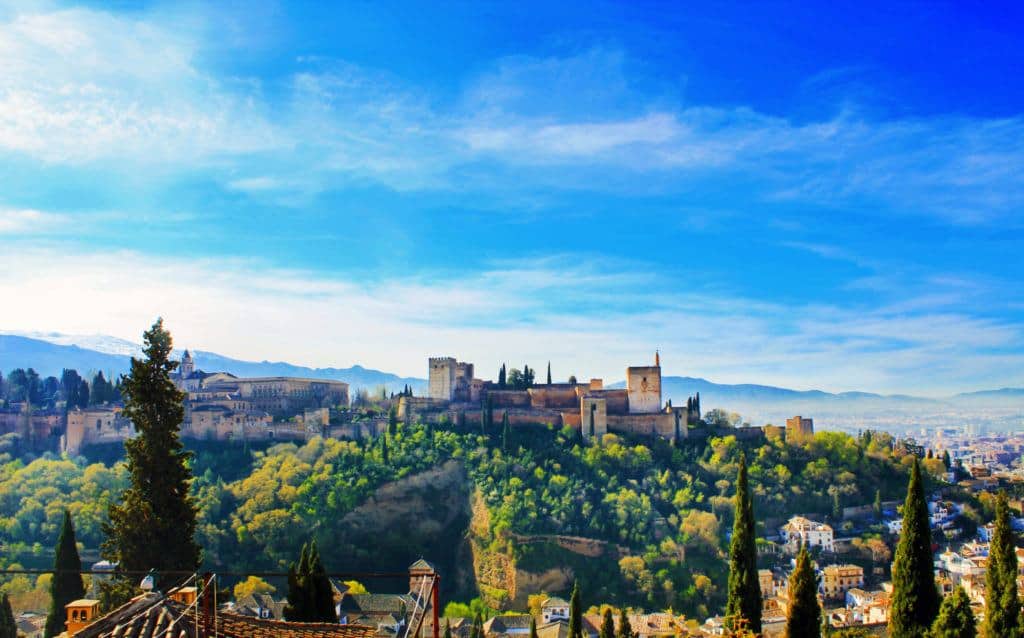
Day One: Exploring the Amazing Architecture of the Alhambra
Where else to start but with the most iconic place in Granada and one of Spain’s greatest treasures: the Alhambra. Literally meaning ‘the red’, the defensive walls of this building complex were built using rammed earth, which glows with a slightly rosy tinge when the sun is shining brightly – which is fairly often in Granada.
It took many centuries for this stunning example of Moorish architecture to reach fruition. While the site of the Alhambra is thought to have hosted fortifications since Roman times, it wasn’t until the 13th century that the first glimpses of what would become a mighty fortress and luxurious residence began to be constructed, when the founder of the Nasrid Dynasty, Muhammad I, declared the Emirate of Granada an independent realm. Over the next couple hundred years, the site was enlarged and improved, both by subsequent Moorish rulers and by the Christian monarchs that took up residence following the completion of the Reconquista.
Make sure you get your tickets to the Alhambra online before you arrive in Spain. Don’t forget, this is one of the most popular tourist sites in the country, second only to La Sagrada Familia in Barcelona. In high season, tickets can sell out days in advance.
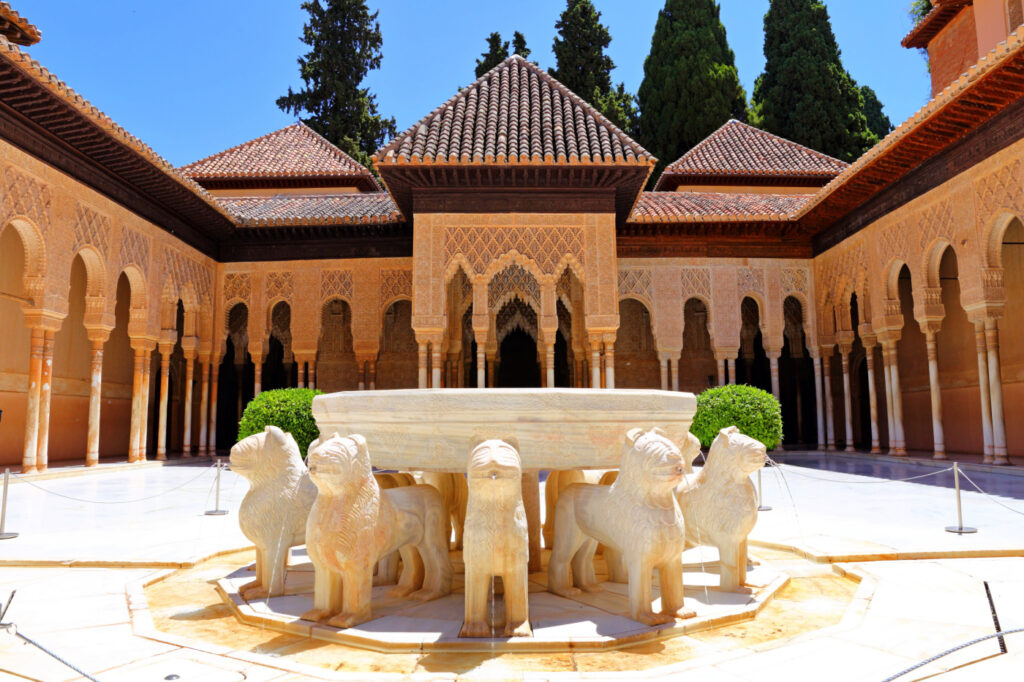
We’re going to take a moment just to do a little bit of housekeeping here regarding Alhambra tickets since you don’t want your trip to Granada to get off to a bad start. When you’re purchasing entrance on the official site, you will have to select an entry time. If you go for the complete visit, allowing access to all areas, bear in mind that the specific time slot you choose is the only time you will be allowed to enter the Nasrid Palaces part of the Alhambra (the other sections can be visited whenever you like). If you miss your window, you will not be allowed in – though once inside you can stay as long as you want.
The other thing to remember is that you will be asked to supply a passport or ID card number when you are purchasing tickets. You’ll need to bring this form of identification along when you visit the Alhambra so the staff can verify your ticket. To clamp down on touts, the people manning the entrance can be pretty strict on this point.
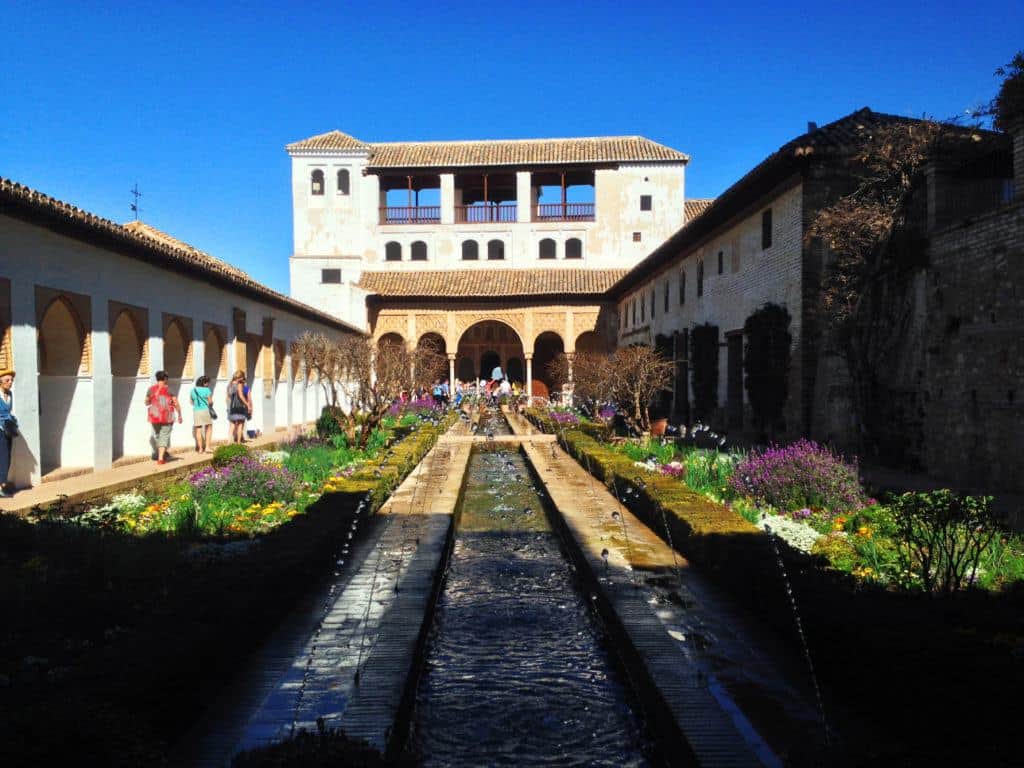
Now we’ve got the practicalities out the way, let’s talk about the Alhambra itself! There are five main places to visit: the Nasrid Palaces, the Partal, the Alcazaba, the Palace of Carlos V, and the Generalife. We recommend starting with the Nasrid Palaces, since then you don’t have to worry about losing track of time while exploring other sections and missing your time slot. Having said that, it’s really up to you where you begin.
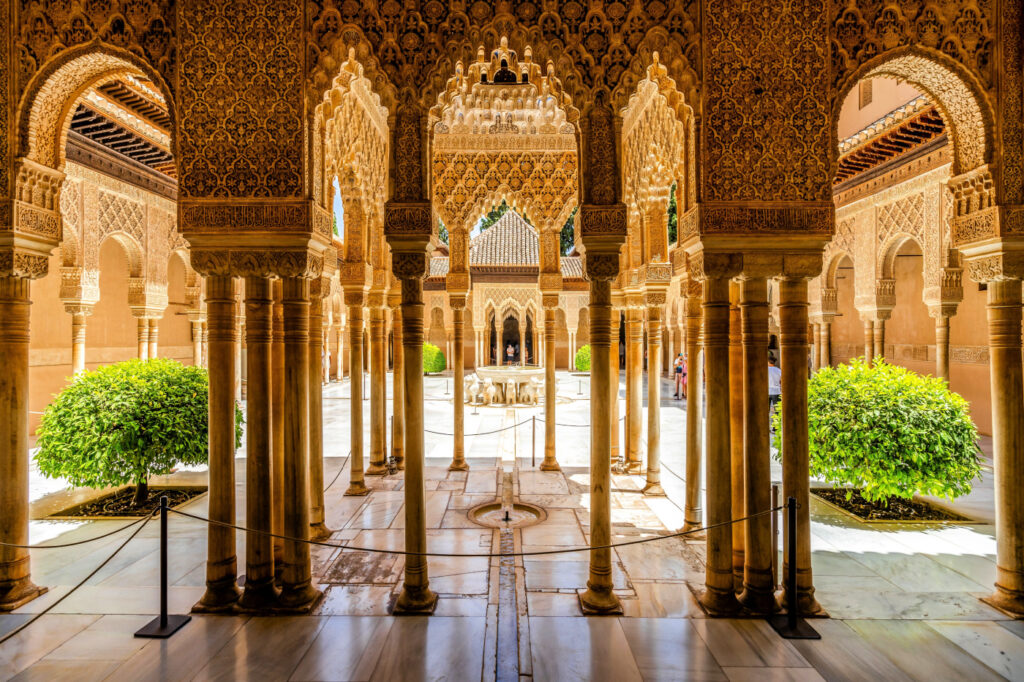
The Nasrid Palaces are where you’ll find the most jaw-dropping architecture and carvings. Most of these buildings originated in the 14th century but were later enlarged or altered by subsequent rulers.
Appropriately enough, you’ll begin in the Mexuar, a reception area where the public could come and make requests of the court. Probably the least impressive part of the palaces, it’s more a teaser of what’s to come, with its still not insubstantial amount of geometric carving decorating the walls and roof, as well as some simple tilework.
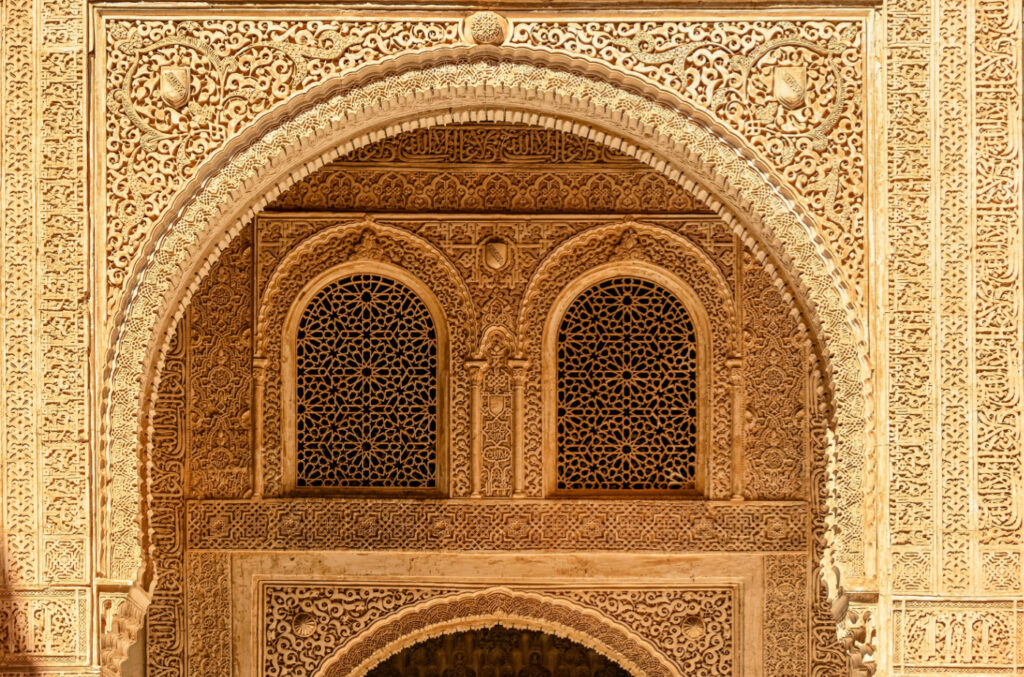
From here, you cross a small courtyard to enter the Comares Palace and one of the most famous areas of the Alhambra: the Court of the Myrtles. This rectangular space is dominated by a reflecting pool, which shines back watery doubles of the surrounding buildings. True to its name, myrtles line the area – and have done so for hundreds of years.
Overlooking this pool is the Comares Tower, the tallest part of the Alhambra, inside which sits another of the jewels of the complex: the Hall of the Ambassadors. Designed to awe foreign dignitaries, the cedar wood ceiling looks like a glittering snapshot of the heavens, framed by elaborate plasterwork.
The final major part of the Nasrid Palaces is the Palace of the Lions, which you enter through a courtyard guarded over by a leonine fountain and surrounded by gorgeous stucco porticoes. This area contains what is one of our favorite parts of the Alhambra, the Hall of the Abencerrajes, which rather grimly gets its name from the fact that members of the Albencerrajes family were executed here. The ceiling is a fantastic example of honeycomb vaulting (more technically known as muqarnas or mocorabes). Subtle recess windows illuminate the octagonal ceiling, which resembles dripping stalactites.
You can see another gorgeous instance of muqarnas in the neighboring Hall of the Two Sisters. If you’re not thoroughly dizzy from all the looking up yet, make sure don’t miss the gilded painting in the adjacent Hall of the Kings, which depicts 10 of the Nasrid rulers seated around a stream of stars.
As you leave this part of the Alhambra, stop for a moment in the covered walkway to gaze out on the gleaming white houses of the Albaicin. This will provide your first bird’s eye view of the pretty city below, though it won’t be your last.
Exiting the time-controlled Nasrid area, you’ll come out into the Partal. The palace here is in fact the oldest remaining part of the Alhambra, built in the early 1300s, but all that is left of it is a modest tower and the portico (make sure to check out the carved wooden ceiling). What makes the Partal worth visiting is mainly the gardens, which in spring and summer bloom with flowers and make for a tranquil walk – the Partal is generally much quieter and less frequented than other parts of the Alhambra. We were particularly fascinated by the system of water channels, which flow between the ponds and flower beds, creating a soothing trickling sound.
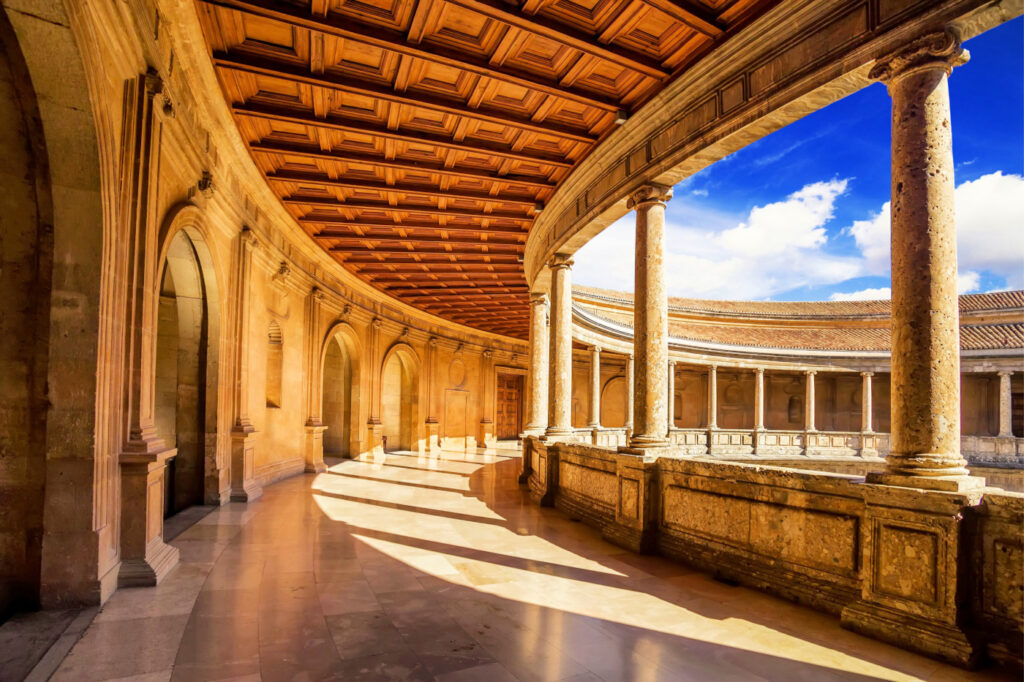
By this point, you’ll definitely have noticed the really incongruous Carlos V Palace, which stands out from the Islamic architecture with its staunchly Italian Renaissance façade. Begun in the 1500s, it wasn’t properly completed until the 1900s, by which time it had become a museum (it still functions as a space to exhibit recovered pieces from the Alhambra and other Granada sites today). You don’t need to spend too much time around here, though you should at least wander inside just to be perplexed at how the rectangular exterior manages to conceal a massive circular courtyard that wouldn’t look out of place in Ancient Rome.
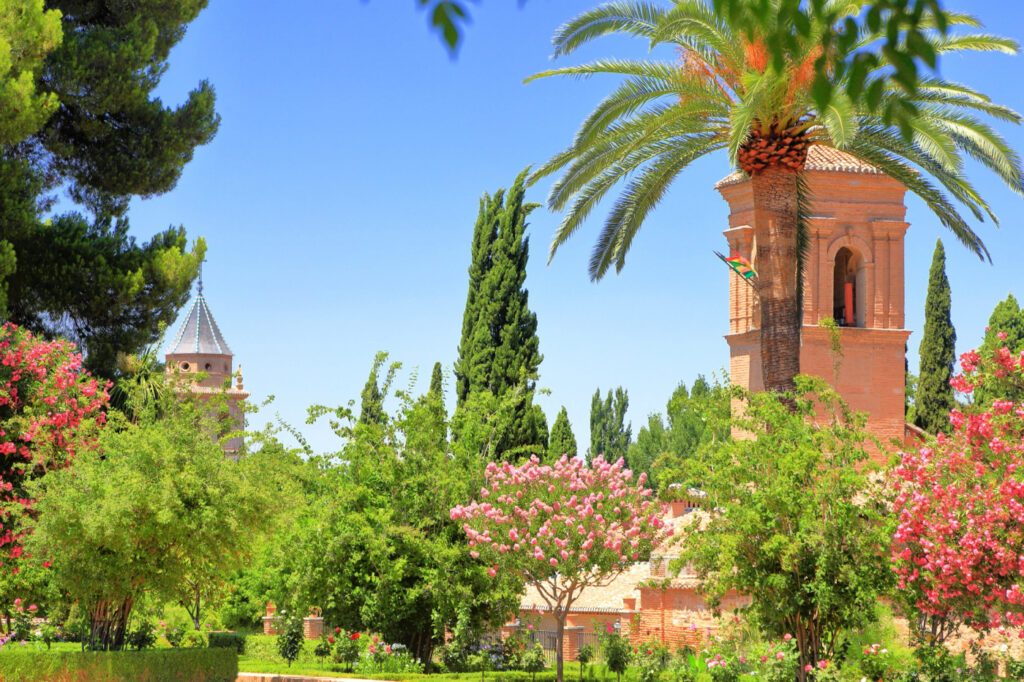
Next, pass through the forbidding gates of the Kasbah and onto the fortified walls. Unlike the rest of the Alhambra, the Kasbah was not built for comfort and luxury, but as a show of might. The solid brick walls of the fortress have been restored to give a full impression of just how intimidating the original structure must have been. Today, however, it has a much more benign purpose: giving you awesome panoramic views of Granada.
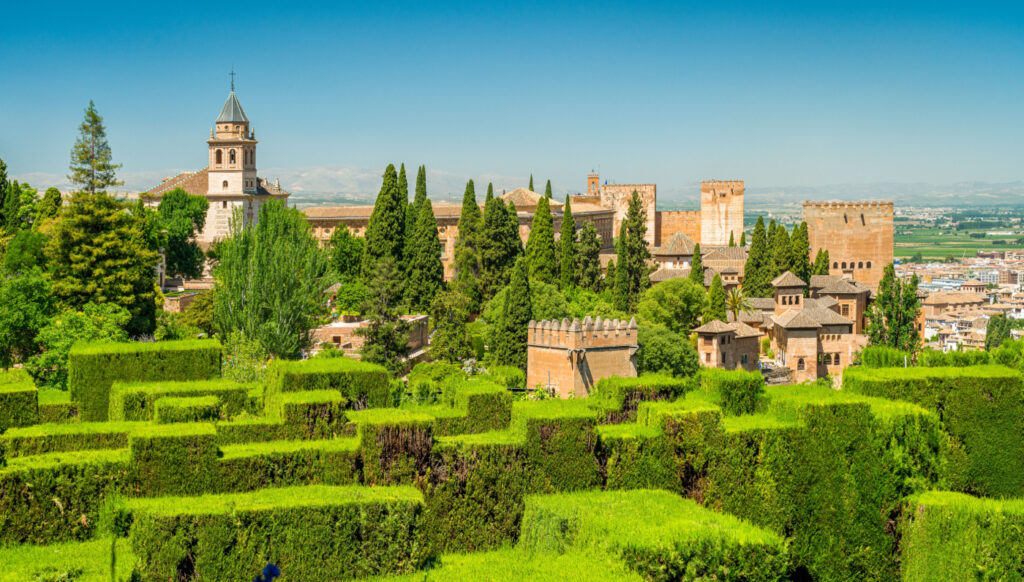
Finish up in the Generalife, which was where the Nasrids (and later Spanish monarchs) went to escape the main palace complex. It has to be said it looks slightly dilapidated, though the Patio de la Acequia (‘Water Channel’) still attracts visitors to its narrow pond, which features water jets surrounded by lush green foliage. Ah, peace!
The Alhambra has a whole lot to take in, so it might be advisable to pay a few euros more for an audio guide to ensure you don’t miss anything. Alternatively, there are several reputable tours like this one that you can take, which will ease you through the history of the grandest elements of the royal residence, while also drawing your attention to more subtle aspects of the Alhambra and Generalife.
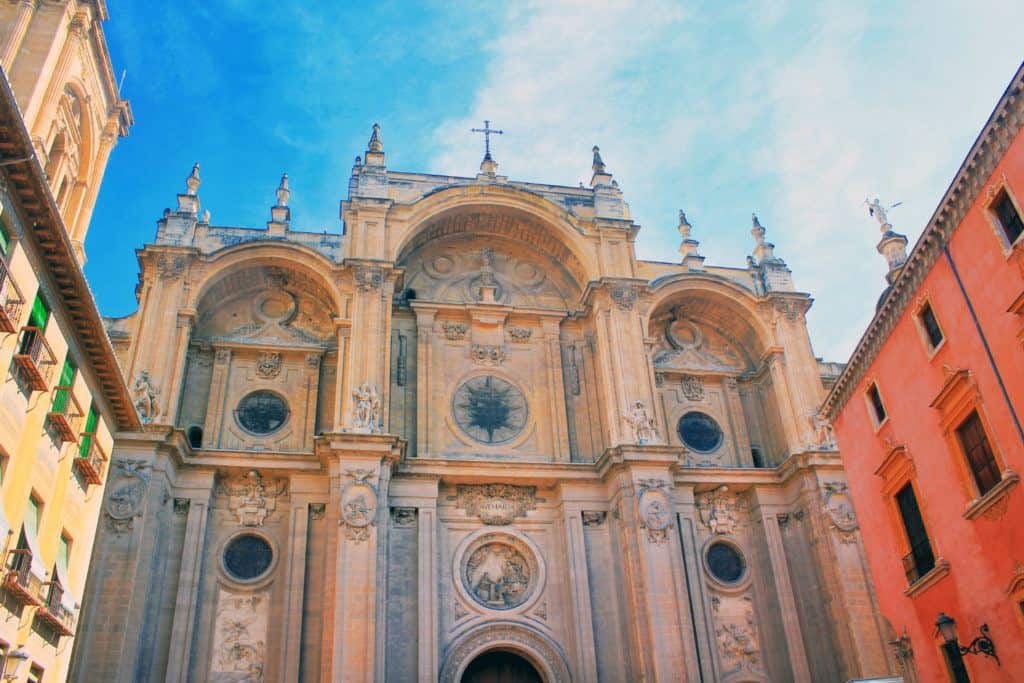
Day Two: The Heart of the City
After spending the first day up in the heights of the Alhambra, being dazzled by the Islamic influence on Granada, your second day should be spent in the heart of the city. Here, the dominant building is the cathedral, which easily dwarfs everything else around it. Built-in the 1500s, it was erected (as so often in Spain) on the site of a former mosque. From the outside, it can look like a bit of a fortress, the circular dome guarded by solid stone buttresses.
You enter through the imposing triple-arched façade, into an interior with thick, muscular-looking pillars. The floor is made up of black-and-white checkerboard tiles that reminded us of a bathroom more than anything else but to each their own! The whitewashed interior is lit up with a lot of golden decorations, which fill each of the little chapels that line the nave.
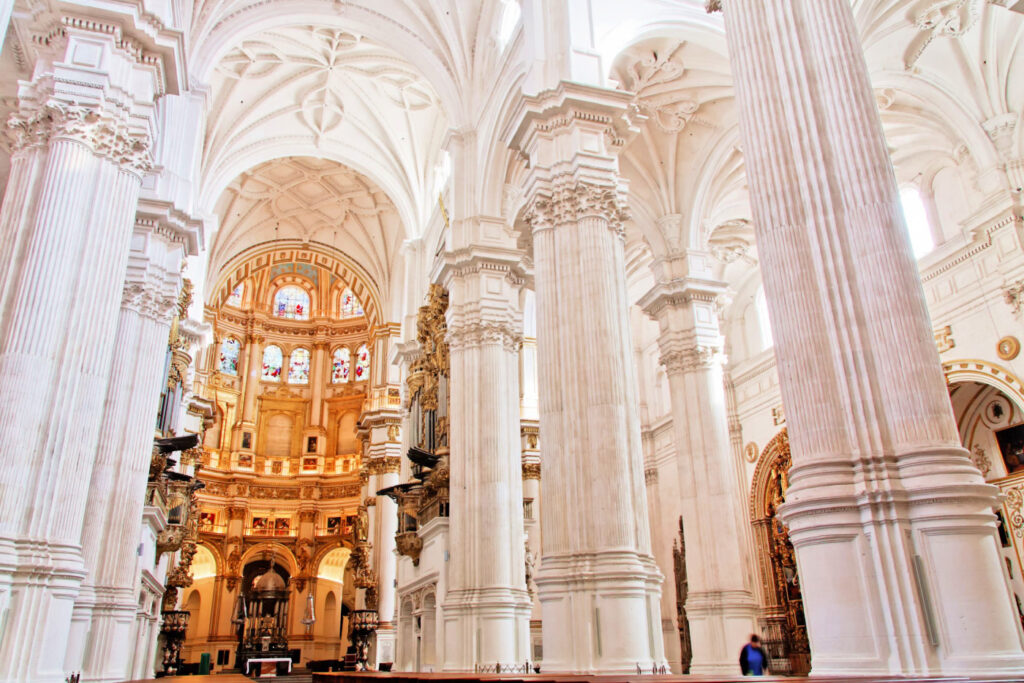
As you approach the altar, you’ll see a pair of monumental gilt-encrusted organs facing each other, built into the walls like two eternal guardians. Coming up to the chancel, our eyes were inexorably drawn upwards, past the paintings and stained-glass windows, to the dome, which has been daubed with blue and gold to resemble the heavens alight with stars.
Granada Cathedral was commissioned by Isabella of Castille, the queen who united Spain by marrying Ferdinand of Aragon and reconquering Andalusia from the Moors. In tribute to her accomplishments, a Royal Chapel connected to the main cathedral was constructed to store her (and her husband’s) remains. Compared to the Renaissance architecture of the main cathedral, the exterior is pure Gothic excess.
Today, you have to get a separate ticket to visit this area. Inside the Royal Chapel are the tombs of Isabella and Ferdinand, given due pomp with some serious marble sculpture. Watching over them is one of Granada’s artistic masterpieces, an enormous wooden altarpiece painted with gold and featuring sculptures of Christian figures as well as scenes from the Passion of the Christ.

By this point, you’ll almost certainly be in need of a little refreshment. Nearby, the Plaza de Bib Rambla is a good place to people-watch while dining in one of the many cafes and restaurants that line the square, selling snacky tapas as well as more substantial Spanish fare.
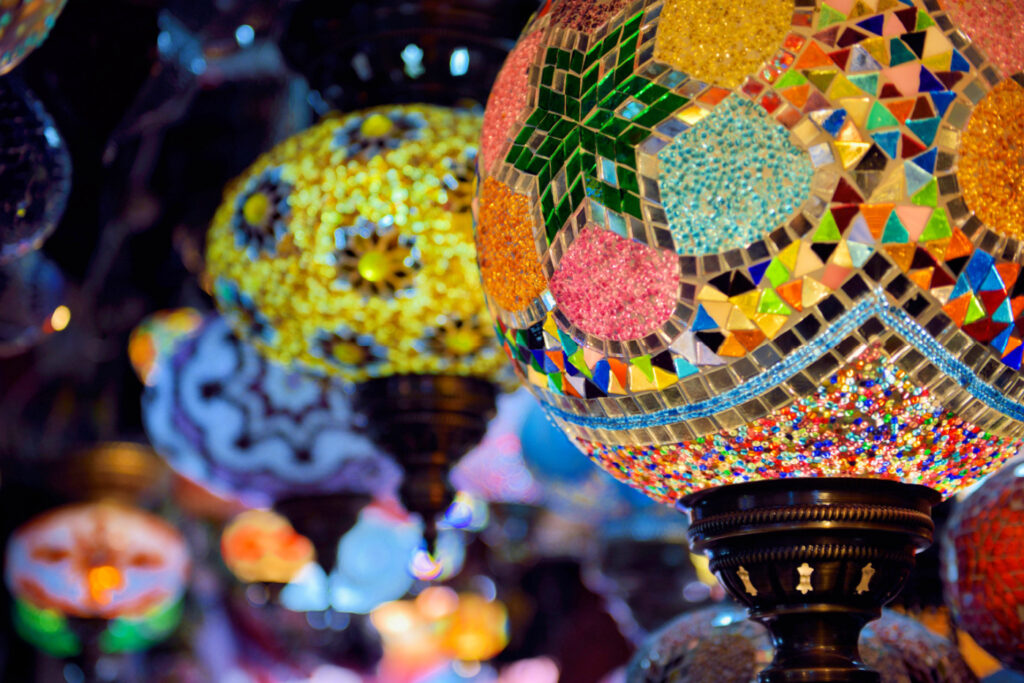
If you’re somebody who likes to collect a memento or two wherever they travel, the Alcaiceria Market is a mini maze of alleyways that are chock-full of little stalls, selling everything from silk clothes to colorful lanterns. This place has been a shopping destination ever since the 14th century, though much of the original architecture was destroyed by a fire in the 19th century. Still, it’s unbeatable for tourist trinkets.
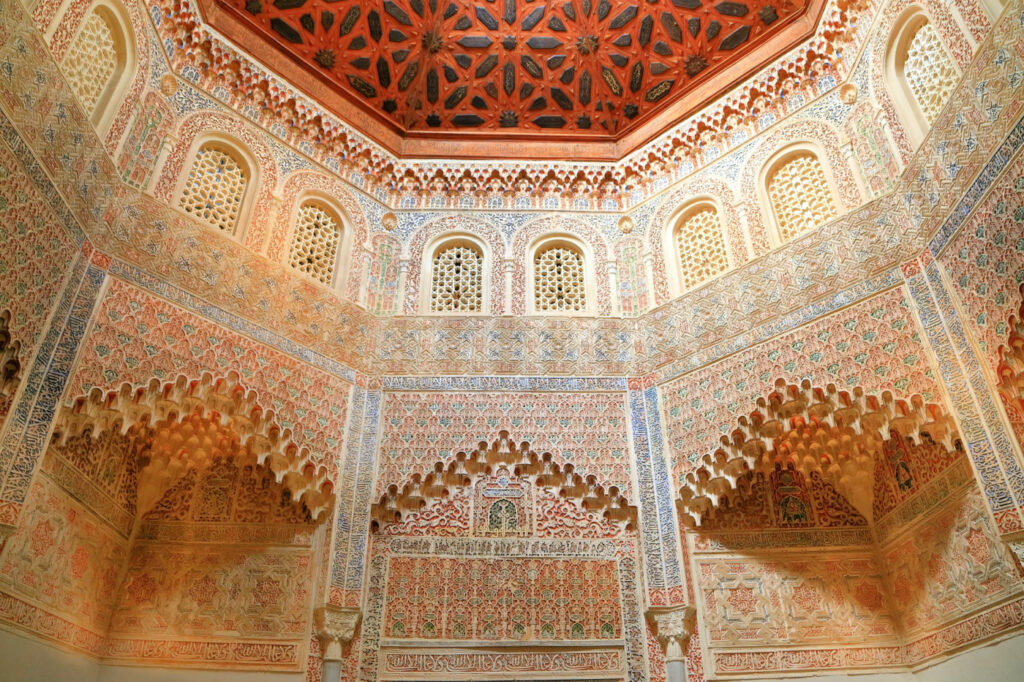
We know we’ve mostly been focusing on Christian sites today, but make sure you check out the Madrasa of Granada while you’re in the town center. Originally a place of Islamic learning, it was gutted and most of it turned into a rather ugly town hall. However, one of the original features still remains. The oratory, a fantastic room complete with muqarnas along the walls and a latticed wooden ceiling.
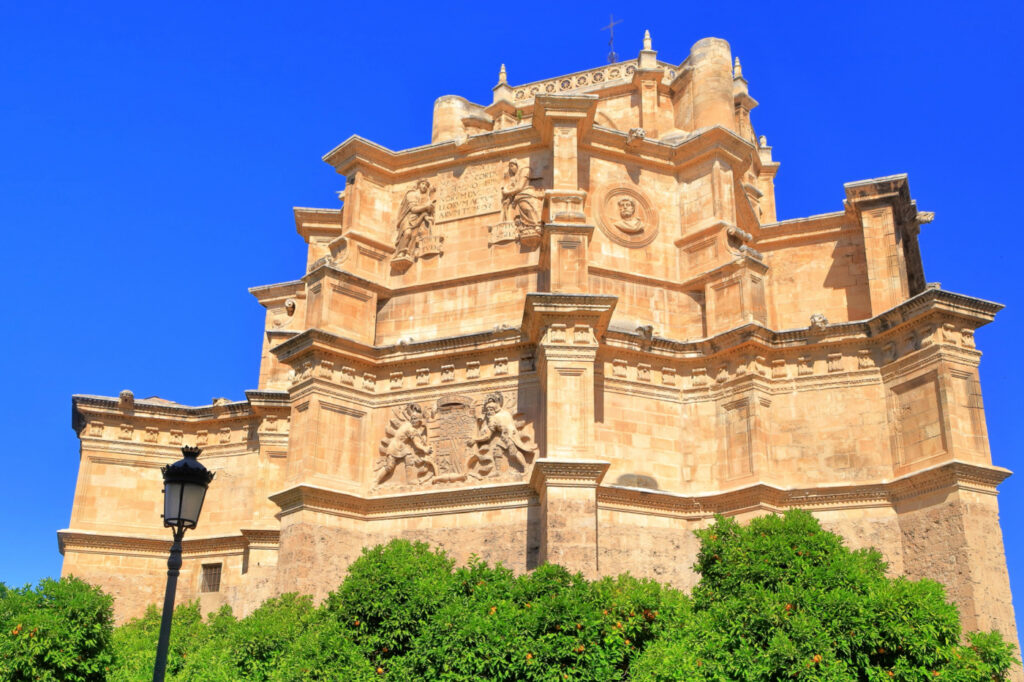
Less than 10 minutes to the north is the San Jeronimo Monastery, founded by – once again – the Catholic Monarchs, Isabella, and Ferdinand, in the early 1500s. This part of town is less popular with tourists, and so the monastery actually does feel like what it originally was created to be: a spiritual escape from the chaos of the outside world. We particularly enjoyed the tranquil walk around the cloisters, the scent of orange trees wafting in the air. Indoors, the chapel has an enormous altarpiece that appears at first glance to be part of the wall, so well has it been blended into the surrounding sculptures and paintings.
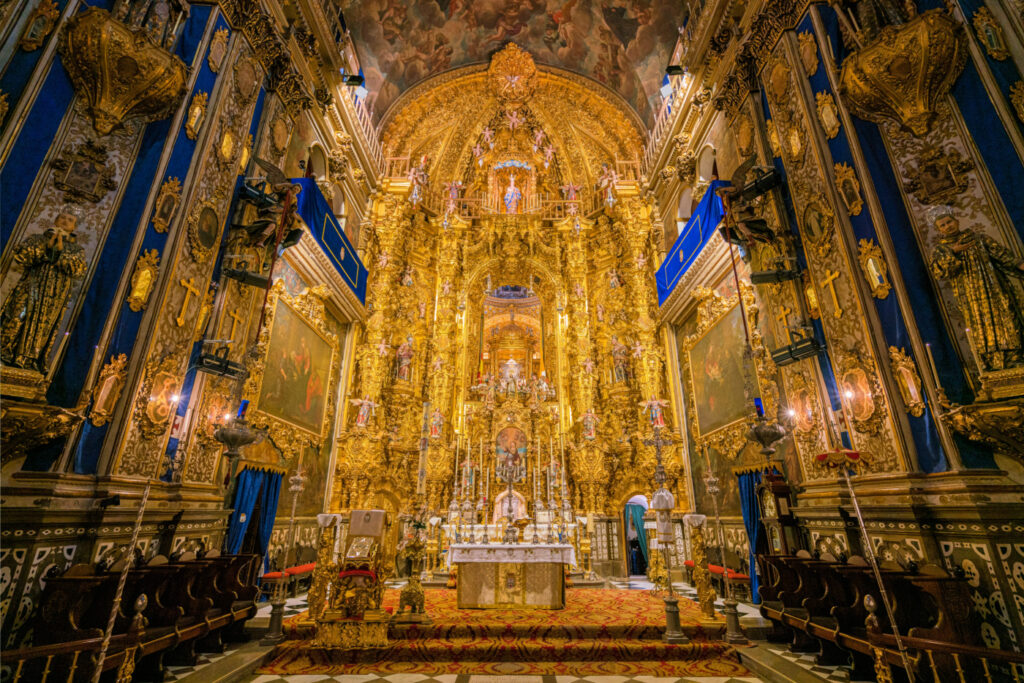
Finish your second day in Granada with a visit to the outrageous San Juan de Dios Basilica. From the outside, this church looks like your fairly standard religious building, with a few stone figures gazing down upon passersby. But inside it’s a different story. To us, it seemed like there wasn’t a single part of the interior that wasn’t covered with gold or silver – except for where the decorator had left space for paintings or frescoes. Built-in the 18th century to honor Saint John of God, it’s at once ridiculous and spectacular how over the top this place is. Think Liberace meet Jesus.
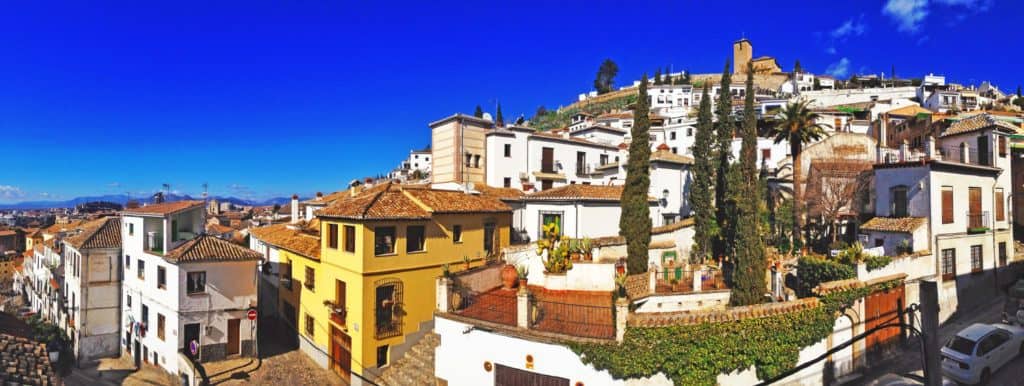
Day Three: Moors and Gypsies
Facing the Alhambra, the districts of the Albaicin and Sacromonte are a world away from the grandeur of the Nasrid Palaces and the ostentatious building projects of the Catholic Monarchs. Historically, these neighborhoods have been thrumming refuges for Granada’s ethnic minorities, whose culture remain an important part of the city today.
The Albaicin is the older and more populated area. This is where the Moorish rulers of Granada originally had their residences and fortifications, before Muhammad I conceived of the Alhambra. While a lot of that past has been diluted over the years, you can still find remnants dotted here and there, including the Gate of Elvira and El Banuelo. The latter is an Arab hammam that is in pretty good shape, considering it was built around 900 years ago. The ruins provide a small snapshot of traditional Arabi life, and we were particularly interested by the octagonal and star-shaped holes in the ceiling, designed to provide natural ventilation to the baths.
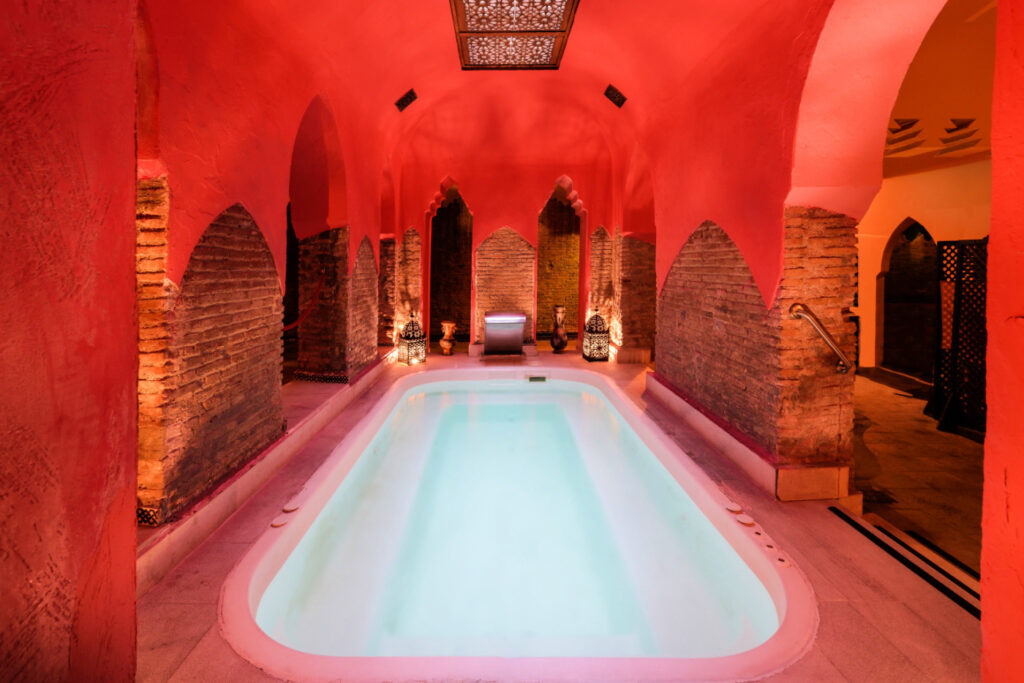
While you can’t use these historic baths today, there are a number of modern-day hammams that aim to emulate the age-old experience. After a lot of tramping around, we definitely appreciated the relaxing, candlelit rooms and calming massages offered at the Al Andalus. It would be untrue to say this is an authentic experience like you would find in Turkey, for example, but for modern comfort with traditional design, this was a heavenly escape and highly recommended if you want a break from all the exploring.
But back to the Granada itinerary! One of the joys of wandering the Albaicin is that you’ll naturally stumble upon pretty-as-a-postcard streets and buildings. Near the lower part of the district, you can stroll along what remains of the Darro River, much of which has dried up to leave natural greenery shooting up beside picturesque old houses.
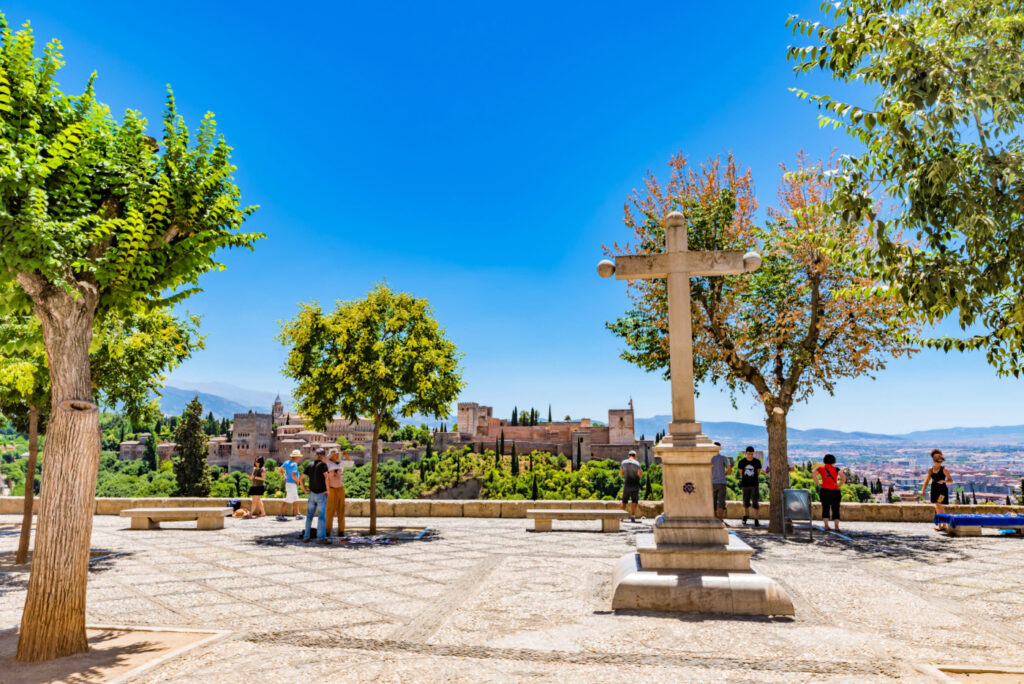
The Albaicin also boasts many viewpoints, including the Mirador de San Nicolas, which is justifiably the most well-known. This open square offers amazing panoramas of the Alhambra as well as the city center, and you could easily while away a half hour just taking in the whole spectacle.
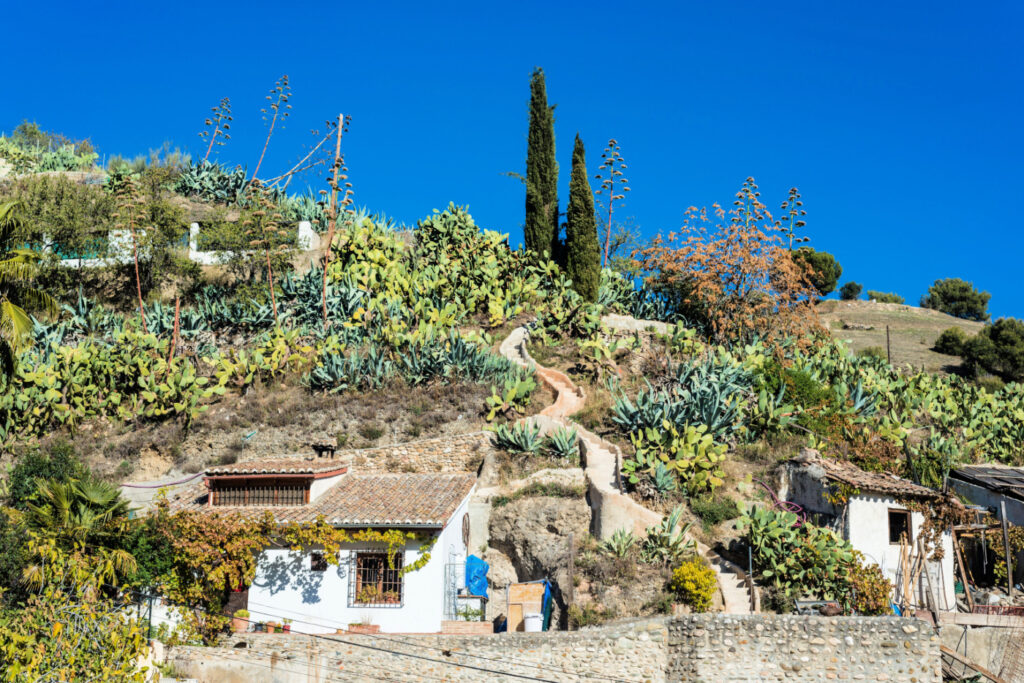
Abutting the Albaicin is the smaller Sacromonte, where the Roma people began settling in the 15th century. Sacromonte is famous for its whitewashed homes, which have been carved out of the hillside. Many of these have now been converted into little eateries, and the area definitely has a touristy vibe, though this doesn’t take away from the uniqueness of this part of Granada. If you want to learn a little bit more about the local culture, you can visit the museum: 10 caves that preserve the traditional tools and aesthetics of the gypsies.
While some racist preconceptions about the people who live here continue to exist in Granada, we found the area absolutely charming to explore – just prepare for some steep slopes! That’s especially true if you head further up the hill to visit the Abbey of Sacromonte. This sprawling, sandy-colored complex is only partially open to the public and must be visited on a guided tour. Beneath the ecclesiastical buildings are a series of caves, rather uninspiring in themselves, but historically intriguing. It is reportedly here that Saint Caecilius, the patron saint of Granada, was martyred by the Romans.
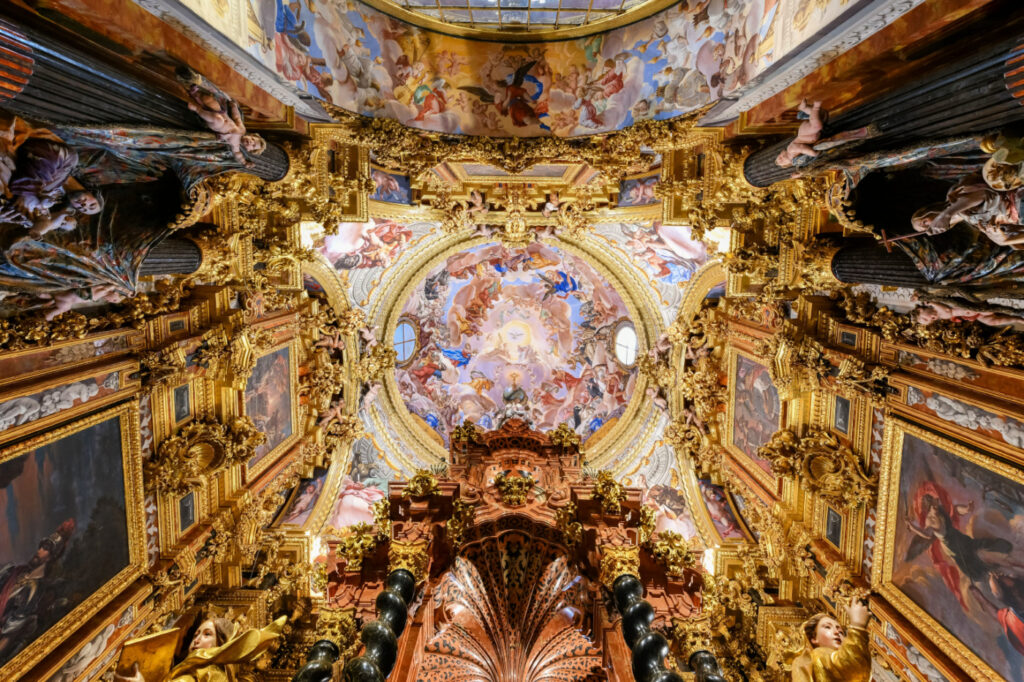
There’s one further religious structure that’s worth visiting in Granada if you can be bothered to make the trek further north: the Carthusian Monastery (more properly known as the Monastery of Our Lady of the Assumption). Because it’s further out of town, it’s a bit quieter than some of the other religious buildings to be found in the city, though no less grand. There are a couple of truly standout things to check out here. First is the lushly painted dome of the tabernacle, showing the heavenly host. The second is the sacristy, painstakingly and elaborately covered with baroque plasterwork to give it the illusion of size, though it is in fact a fraction of the area of the main church – which is also, we should add, fantastically decorated.
If you intend to visit all the major Catholic sites in Granada, it’s worth considering a combined ticket. This costs €18 and gives you access to Granada Cathedral, the Royal Chapel, the Carthusian Monastery, Sacromonte Abbey, and the Monastery of San Jeronimo. Individually, these each cost €5 to enter.
Finish the day – and your trip – with an evening meal at the Jardines de Zoraya. This restaurant has a beautiful courtyard and serves up delicious modern fare. Granada is one of the places in Spain that lays claim to having the oldest flamenco tradition, and the Jardines de Zoraya has regular demonstrations where you can see the dance style performed live. Alternatively, you can buy tickets to more formal shows around town – believe us, there are quite a few!

What to Know Before You Go
Where to Stay
Granada is a popular tourist location, which means there are loads of accommodation choices. For something modern and stylish, the BiBo Suites group operates several apartments throughout Granada, all of them in excellent locations. The BiBo Suites San Agustin is one of the newer options, concealed along a downtown side street, just a few steps from the cathedral. We particularly loved the size of our suite, which was decorated tastefully – though the kitchen and bathroom area were perhaps a little bland, despite being excellently outfitted.
For a quirky, affordably priced option, the Oripando Hostel has a fun backpacker aesthetic. Its location in the Albaicin means you’ll be in a buzzy part of the city, with easy access to almost all of Granada’s most notable attractions. It is just 10 minute walk to the cathedral as well as the wonderful views of the Mirador de San Nicolas, and about half an hour to the Alhambra. The courtyard boasts a small pool to cool off in during the warmer months. The staff are friendly, and our private room was clean and had its own bathroom.
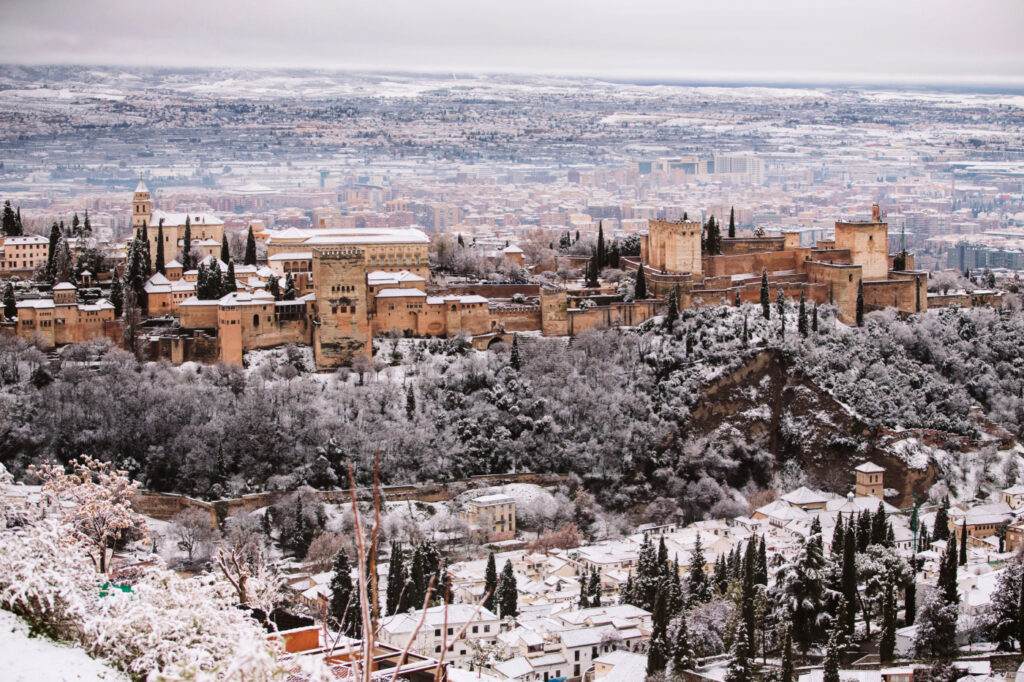
The Best Time of Year to Visit Granada
On the whole, Granada is in a fairly dry part of Spain, with only a moderate number of lightly showery days, even during the wettest months of November and December. However, the winters can be chilly, with temperatures dropping to below 50 degrees Fahrenheit (10 degrees Celsius). From November onwards, Granada’s accommodation also tends to become busier with skiers (and so more expensive for everyone), as the city abuts the snowy slopes of the Sierra Nevada – a popular winter sports spot for Spaniards and external visitors alike.
On the other hand, it can get very hot in summer. High temperatures of 93 degrees Fahrenheit (34 degrees Celsius) in July and August may seem reasonable for the beach, but it’s a different story when you’re clambering up the slopes of Sacromonte or strolling through the busy streets of the city center.
While you’re unlikely to encounter extreme highs or lows in terms of temperature no matter when you visit, April to May and September to October are probably the best months to explore Granada. The weather is mild, if slightly wetter than in summer.
If you want to experience some local Catholic culture, the Semana Santa (Easter Week) sees the streets of Granada filled with processions. Holy figures are carried through the streets of the city, accompanied by the Christian faithful. This can be fascinating to watch, but also means public spaces are much more crowded than usual.
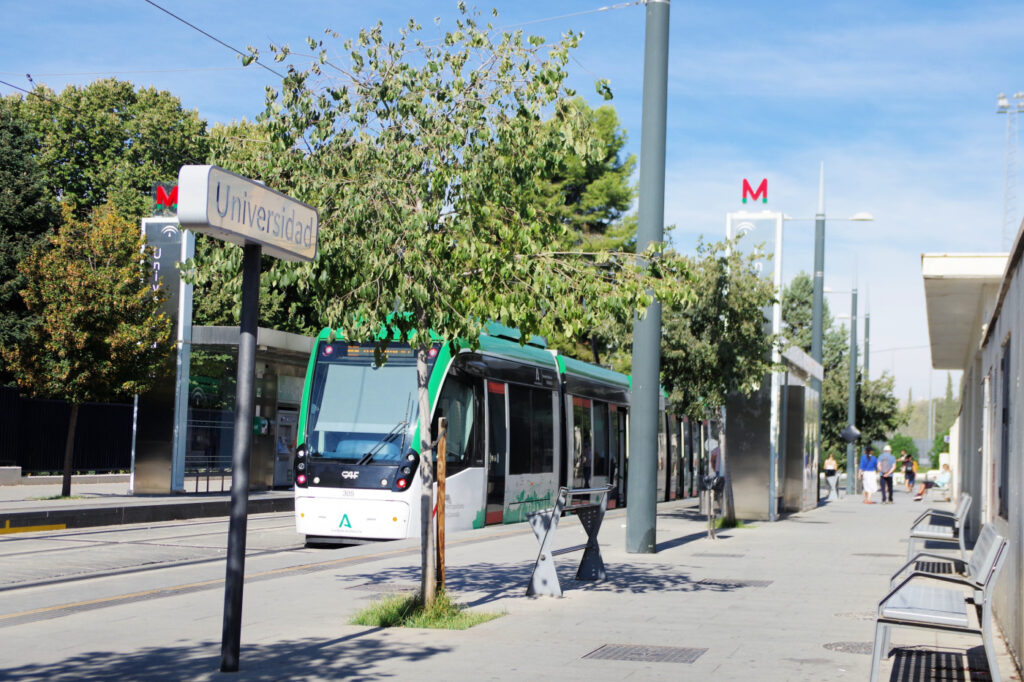
How to Get Around Granada
Most of Granada can be traversed on foot, and we definitely recommend this, as you’ll be able to absorb so much more of the atmosphere. Having said that, bear in mind that downtown Granada is on a plain, sandwiched between hills. The Alhambra and other associated palatial buildings are on one of these hills, while Albaicin and Sacromonte rise out of another. In other words, there’s plenty of climbing involved!
There is a metro system, but the stations are mainly useful for locals traveling between the suburbs and the center. Instead, the buses are the way to go if you don’t want to walk too much. Single tickets cost €1.40, and you can cover all the main tourist attractions using the network.
Taxis, which can be hailed on the street or found at taxi ranks, are reasonably priced (charges are according to a meter) and closely regulated by the municipal government. Alternatively, you could consider renting a bike/e-bike from as little as €18 for four hours. Just don’t forget about those hills…
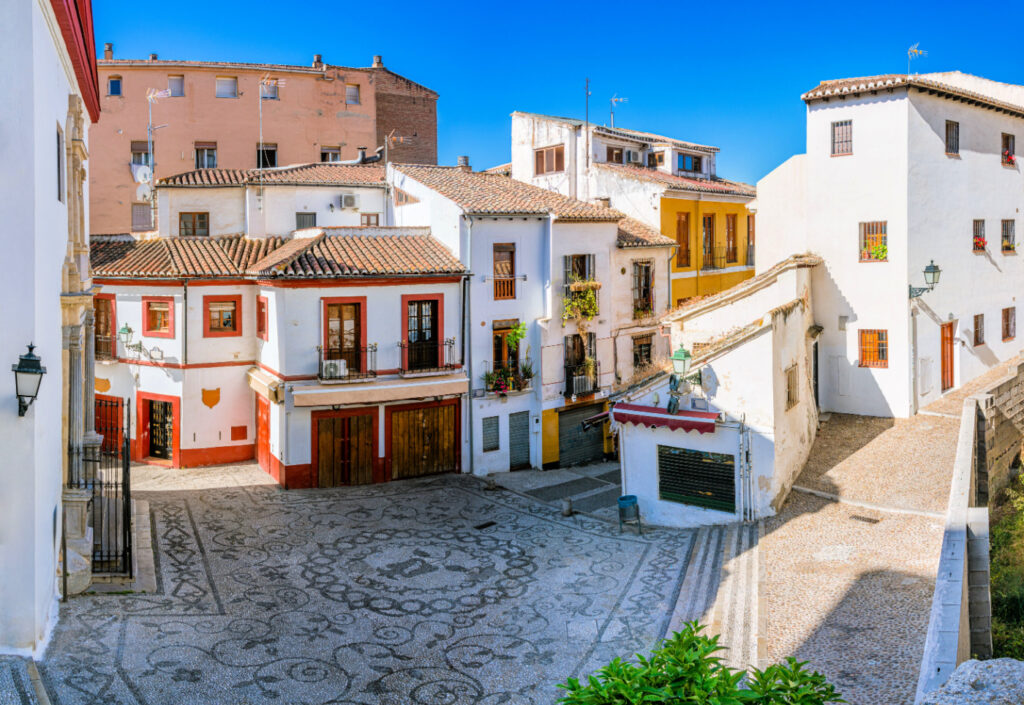
Safety Advice
As with most of Spain, you’re unlikely to encounter violent crime during your trip. Compared to the notoriously active thieves in Barcelona, Granada is much safer. Still, you should be aware of opportunistic criminals, such as pickpockets or bag snatchers. Like any place you travel, try to ensure you are not walking about alone late at night.

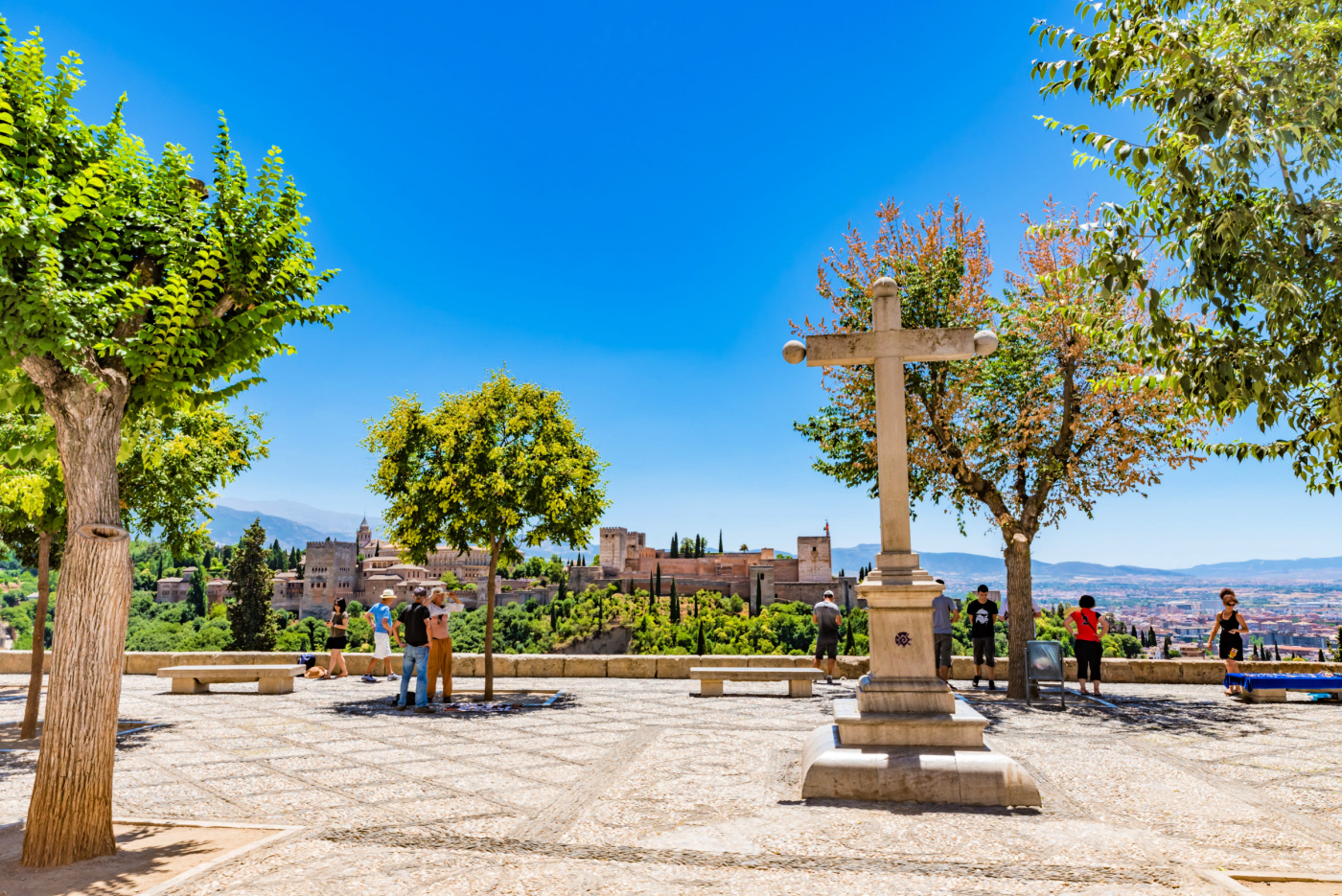





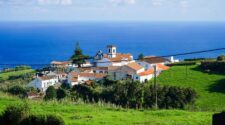
No Comment